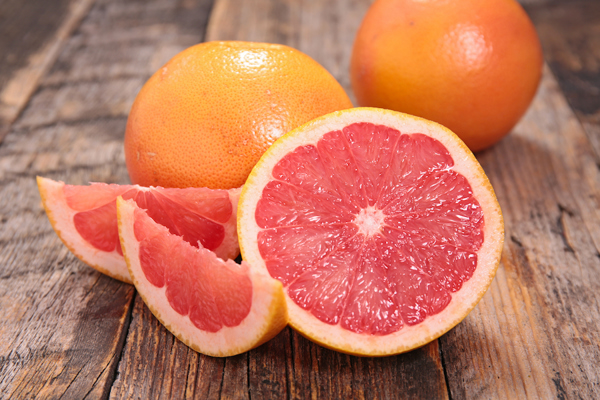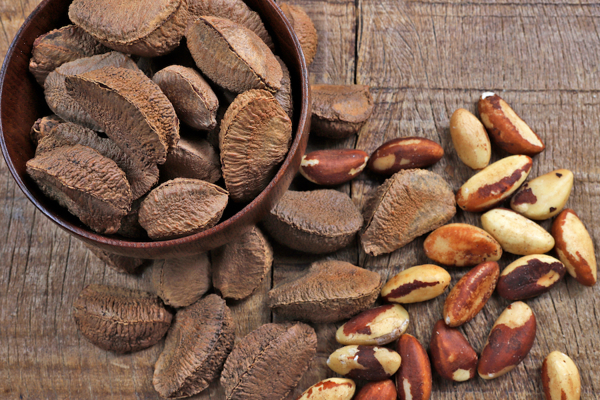
Should genetically modified foods be labeled as such?
May 16, 2014

- Related Topics:
- GMOs,
- Genetic engineering,
- Bioethics,
- Plant biology
A curious adult from California asks:
"I heard they just passed a law requiring that genetically modified (GM) foods be labeled as such in Vermont. This seems like a good idea to me. What do you think?"
For right now I don’t think this is a very good idea. It gives the consumer very little useful information and has the possibility of condemning many, many people to blindness and even death.
An argument can be made that consumers have a right to know if their food is genetically modified (GM) or not. But to what end?
As we’ll see below and as the American Association for the Advancement of Science has stated, GM foods are as safe to eat as any other foods. So instead of protecting the consumer, what the label is really doing is trying to kill off GM foods entirely. This may have devastating consequences.
The world’s population is predicted to grow to 9 or 10 billion by 2050. That is a lot of mouths to feed and we definitely want GM foods available to help. Otherwise there could be mass starvation or at the very least severe malnutrition.
While this won’t happen here in the western world, it is a real concern for everyone else. In fact, even with today’s population, large parts of the world’s population are not getting the nutrients they need to be healthy. GM foods are one of the ways to deal with this.
All of this potential upside could be at risk if people in the U.S. and the rest of the developed world stop buying GM foods. If they stop buying, the companies that create these crops won’t make money and so will stop making new crops.
So one way to look at labeling foods as GM is as a backdoor way to end GM crops forever. And this would be a shame for lots and lots of people both now and in the future.

GM Foods are Safe
Except in rare exceptions that I’ll get to in a minute, every study that has looked at the safety of GM foods has shown them to be as safe as any other food. In other words, there is no health reason to label a GM food as GM.
The most damning report for GM foods and health came out in 2012. The researchers in this study found that rats that were fed GM corn were at a higher risk for getting cancer. It looked like GM foods were causing cancer.
This study caused quite a sensation but a close look showed that the research was not conclusive. The authors used rats that were naturally more likely to get cancer and they had only ten rats in each experimental group. This combination meant that simple chance could explain why one small group of rats happened to have a few more tumors than a different small group. What they were fed probably didn’t matter at all. The journal retracted the paper in 2013.
As I said, this was by far the best “proof” that GM foods were a general danger to human health. But some GM foods could still cause problems for some people.
The best example of this is a GM soybean to which a brazil nut gene had been added. In early testing it was found that people who were allergic to brazil nuts were also allergic to this soy product. The required testing caught this problem before the product was marketed and no one was harmed.
Labeling all foods as GM won’t really solve problems like this. I suppose anyone with allergies could avoid all GM foods but that seems like unnecessary overkill.
An alternative approach might be to have a label that says something like, “This food may contain brazil nuts.” These labels are all over food these days and this would solve the problem without driving a dagger through the heart of GM foods. And for the world’s sake, we probably don’t want to do that.

GM Foods and a Healthier World Population
As I have said, GM foods are not any more dangerous to eat than any other foods. What I haven’t shown yet is that eating them can actually make someone healthier than if they ate their regular old, non-GM food.
The classic example here is a GM crop called golden rice. This rice has the potential to prevent hundreds of thousands of cases of blindness and to save millions of lives each year.
In many parts of Asia, once children are weaned off mother’s milk, they pretty much get rice to eat. While this is a great source of calories, it is a terrible source of vitamin A.
Hundreds of thousands of these kids go blind permanently each year because they don’t get the vitamin A they need. And many of the adults around them die because they don’t get enough vitamin A either. This is where golden rice can help.
Two genes have been added to golden rice to make it an excellent source of vitamin A. If people living on just rice ate golden rice instead, they would probably get enough vitamin A to keep their vision and to make them healthier.
Being more nutritious is just one way GM foods can help people. Another is that they can be engineered to grow in places where crops couldn’t grow before. This will mean more food can be grown to feed those extra two billion people who will be here in 30 or 40 years.
Finally crops can be engineered to be more productive wherever they are grown. Again this will mean enough food to feed 10 billion people each year. It would be a shame for these people to suffer so the consumer’s right to know can be validated.
All Foods are GM Foods
As a final point it is important to mention that all the foods we eat are genetically modified in one way or another. The only difference is how they are modified.
Breeding is one way. Since we started planting crops and breeding animals, we have changed their genetic background. No GM crop is as intensely modified as the industrial turkey produced through normal breeding.
Another way foods are genetically modified is by severely damaging their DNA. For example, pink grapefruit was created by blasting grapefruit seeds with radiation.
The result of this approach is the mutation that leads to pink grapefruit, along with thousands of other mutations scattered throughout the grapefruit’s DNA. If anything this would be predicted to be more dangerous than GM foods (but of course they are perfectly safe). Maybe they need a label that says “created with radiation”.
Compare this approach to what is referred to as genetically modified: To make a GM food, one or at most a few genes are added to the organism’s DNA. Instead of being littered with damage, the DNA has just a few precise changes. Maybe it should be labeled, “less genetically modified than pink grapefruit.”
The bottom line is that if you are going to label GM foods as GM foods, we may have to label all the rest of our food in various ways too. In the end, everything in the grocery store will look like packs of cigarettes with all of those warning labels.

Author: Dr. Barry Starr
Barry served as The Tech Geneticist from 2002-2018. He founded Ask-a-Geneticist, answered thousands of questions submitted by people from all around the world, and oversaw and edited all articles published during his tenure. AAG is part of the Stanford at The Tech program, which brings Stanford scientists to The Tech to answer questions for this site, as well as to run science activities with visitors at The Tech Interactive in downtown San Jose.
 Skip Navigation
Skip Navigation
